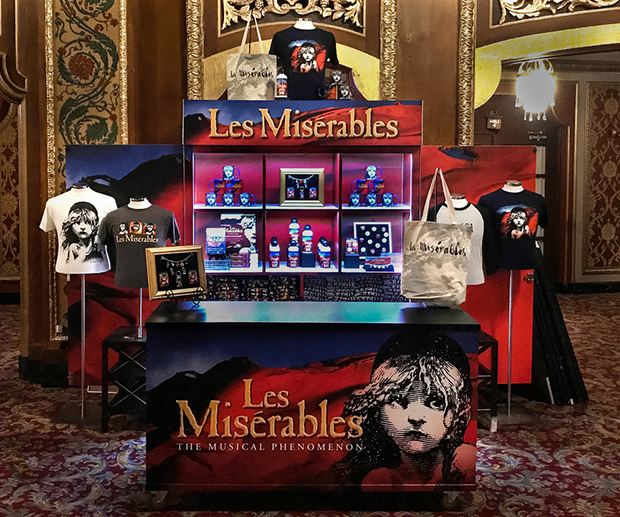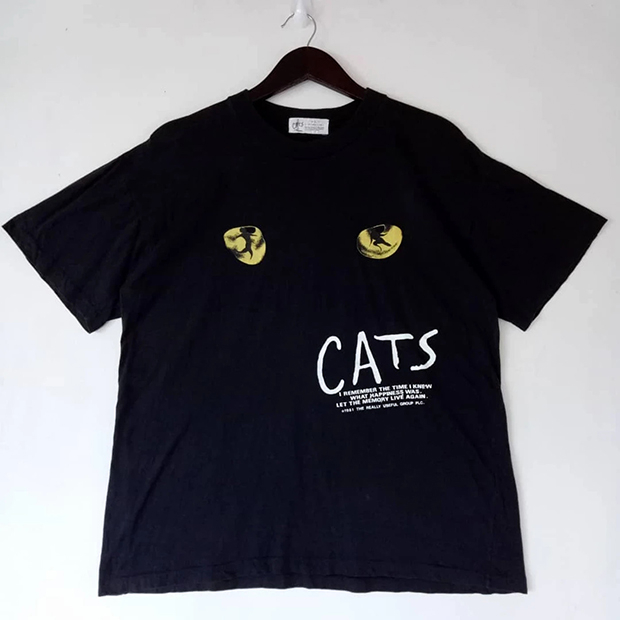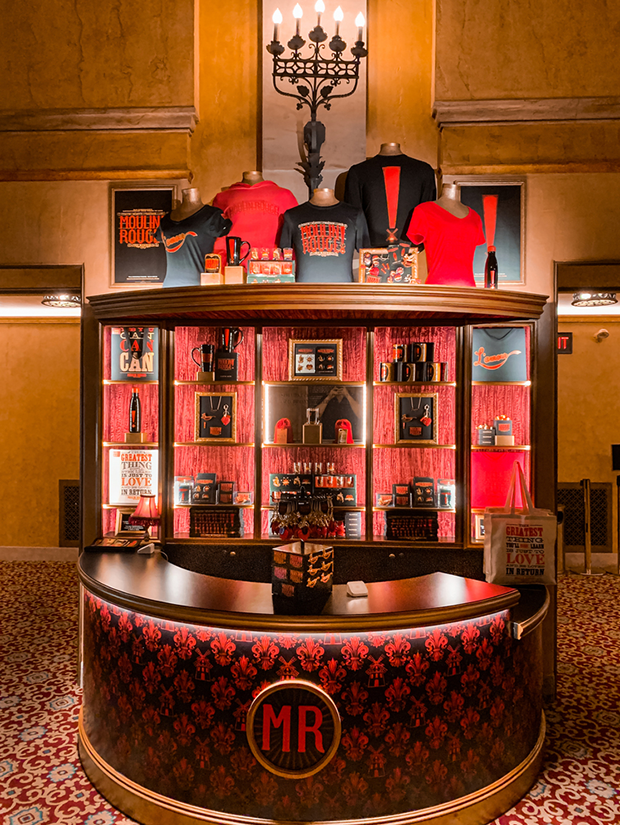Memorializing the Moment: A History of Musical Theater Merchandise
Chances are, you’ve seen a merchandise booth at the back of a theater. But where did this ever-reliable industry come from?

(© Platypus Merchandise)
When pressed to give examples of innovations within the American theater over the last 50 years, a number of technological marvels likely come to mind. 1970 was the last year a musical, The Grass Harp, was presented on Broadway without any microphones or artificial amplification. Computers crept into technical booths across the country once A Chorus Line established a digital lighting system in 1975. These modern marvels, now commonplace, have been dwarfed in impact by one seemingly ubiquitous piece of infrastructure at the back of every auditorium: the merchandise booth.
While promotional items had existed in decades prior (the original production of Shuffle Along produced a handheld game to advertise their one-year anniversary in 1922), licensed merchandise was hard to come by in the first half of the 20th century. Souvenir culture was very different in 1940 than it is today, and many considered their ticket stubs and programs to be the only items of significance needed to memorialize the moment. If a show was a particularly large hit, like Hello, Dolly!, a souvenir program might be produced with glossy copies of the promotional photographs for each successive star. Only a handful of juggernauts produced their own line of merchandise prior to 1970; as Todd S. Purdum writes in his Rodgers and Hammerstein biography Something Wonderful, South Pacific licensed a line including a 'Knucklehead Nellie' doll, a collection of linens, an engraved mirror compact, and a cigarette case once producers caught souvenir shops selling fake ticket stubs for buyers to display as though they attended the show.
By the early 1970s, things began to change as enterprising producers took interest in the money-making techniques utilized by rock bands across the country. When a rock tour would end, producers would hire the team that had coordinated the concert's merchandise to come to New York to hawk T-shirts to a newly receptive audience. These initial merchandise booths were crude, usually consisting of an unmarked black box tucked into the lobby with a T-shirt stapled to the wall to show off the logo.
By 1981, producer Cameron Mackintosh entered the fray, and made musical theater merchandising a massive part of a show's marketing. When Cats opened, it created a firestorm, with its trademark yellow eyes peering out from T-shirts, toys, sweatshirts, coffee mugs, and watches. The Cats logo shirt was so popular, in fact, that it was reportedly the second most popular T-shirt of the 1980s, second only to the Hard Rock Café's. Lines would snake through the lobby of the theater as harried salespeople in black leotards leaped between customers, and the merchandising beast was unleashed.

(image via Grailed)
Logo shirts became a crucial part of guerilla advertising. Instead of paying to plaster a poster on the side of a bus stop, audience members were buying the advertisement to wear themselves. By the end of the decade, merchandising had become an institution, found in every theater on Broadway, regardless of the production. Musicals tend to have the largest number of offerings, and some plays skirt by with only a handful of items, but having some type of merchandise tie-in has become de rigueur.
This fledgling facet of the industry led companies like Platypus Merchandise, which had begun designing programs in 1958, to pivot to larger merchandise offerings, tailor-made for each production with precision. Merchandise booths began to be designed to fit in with a show's aesthetic, as though it was part of the show itself. Goods were designed outside of the logo mindset, with quotes and lyrics emblazoned on shirts. Prestige items were produced that had no visible relation to the production, outside of the buyer's knowledge of where they had been obtained (in the 2017 revival of Sunset Boulevard, high-end jewelry was sold to patrons eager to get their hands on Norma Desmond's jewels, though the designs did not actually match what was seen on stage).
The array of available items has dramatically increased over the last 25 years; Platypus created an elaborate display for Six, with items personalized to each character so that a consumer could purchase an entire line specialized to their favorite Queen. Certain items flow in and out of favor. Baseball caps have been replaced by the tote bag as one of the most popular pieces, and lapel pins and stuffed animals have seen an uptick in popularity in the last decade. Over the years, a set of ten core products have emerged, with the majority of productions checking these boxes before branching out to more unique offerings: a program, logo T-shirt, sweatshirts, magnets, a coffee mug, a window card poster, a keychain, a tote bag, lapel pins, and phone accessories.
For many theatergoers, these items have become an integral part of their experience. More than just marketing, they have come to encapsulate memories. At The Phantom of the Opera, parents will regularly come to the booth to purchase the same shirt for their child that their parents bought for them when they saw their first Broadway show. While immensely valuable to the productions themselves, these items have far more sentimental value for the consumers. They capture something invisible to the human eye and turn it into a consumable product — the tangible proof that you had an experience at the theater.

(© Platypus Merchandise)








